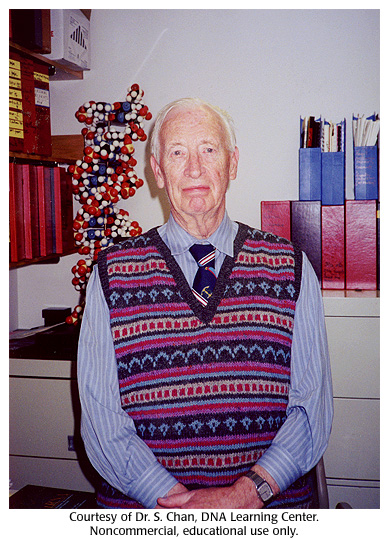Gallery 21: Paul Zamecnik, 1999

Paul Zamecnik in his office at Massachusetts General Hospital, 1999.
Paul Zamecnik , General Hospital
- ID: 16473
- Source: DNALC.DNAFTB
Related Content
15001. Paul Zamecnik
Paul Zamecnik photo
16489. Biography 21: Paul Charles Zamecnik (1913-2009)
Paul Zamecnik developed a cell-free extract that he and Mahlon Hoagland used to study protein synthesis. They identified tRNA as the adaptor predicted by Francis Crick in his Central Dogma
16025. Paul Zamecnik, 1956
RNA is an intermediary between DNA and protein.
16490. Biography 21: Mahlon Hoagland (1921- )
Paul Zamecnik developed a cell-free extract that he and Mahlon Hoagland used to study protein synthesis. They identified tRNA as the adaptor predicted by Francis Crick in his Central Dogma
16472. Gallery 21: Paul Zamecnik, J. S. Fruton and K. Linderstrom-Lang, 1979
1949 Cold Spring Harbor Symposium. The man busy taking notes is Paul Zamecnik. Also in picture J. S. Fruton (L), K. Linderstrom-Lang (R).
15885. Cell-free extracts
Paul Zamecnik first developed the cell-free extract system, which Marshall Nirenberg adapted to decipher the genetic code. Paul Zamecnik and Mahlon Hoagland also isolated activated tRNA, the "adaptor" that shuttled amino acids to ribsomes for incorporati
16484. Video 21: Paul Zamecnik, clip 1
Describing an early experience that led to interest in studying protein synthesis.
16485. Video 21: Paul Zamecnik, clip 2
The background and motivation for developing a cell-free protein synthesis system, and how the focus soon changed to finding out "what the machinery was like."
16486. Video 21: Paul Zamecnik, clip 3
Describing the cell fractionation experiments to isolate the components needed for protein synthesis.












